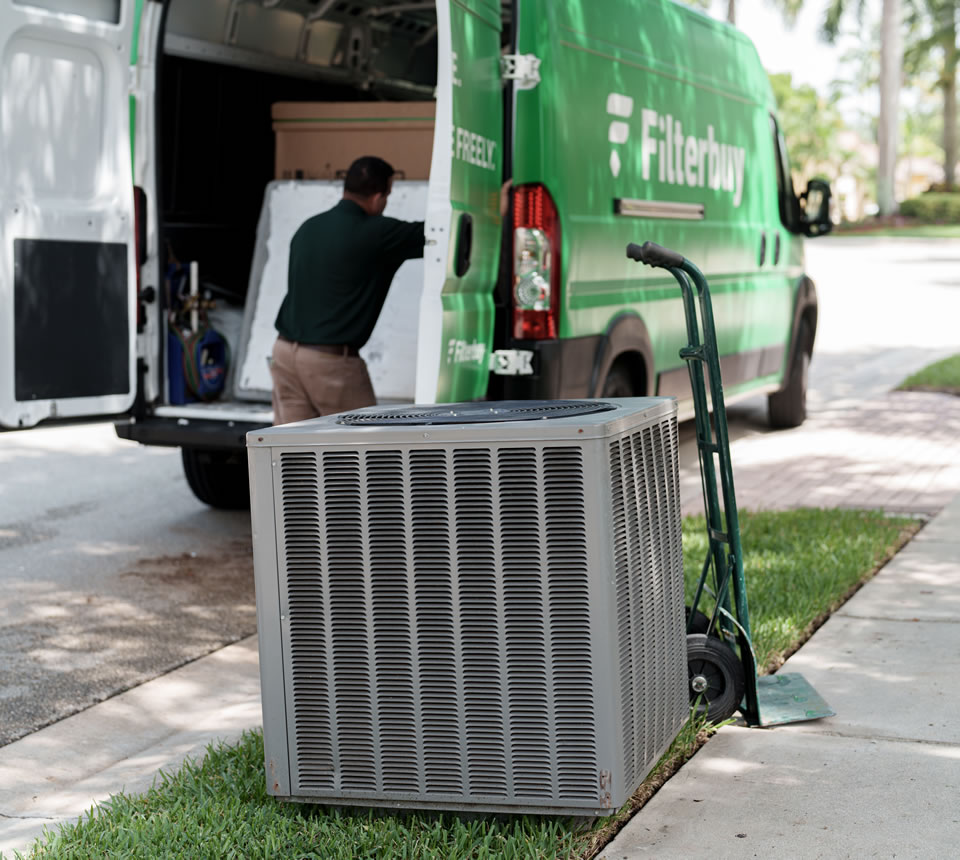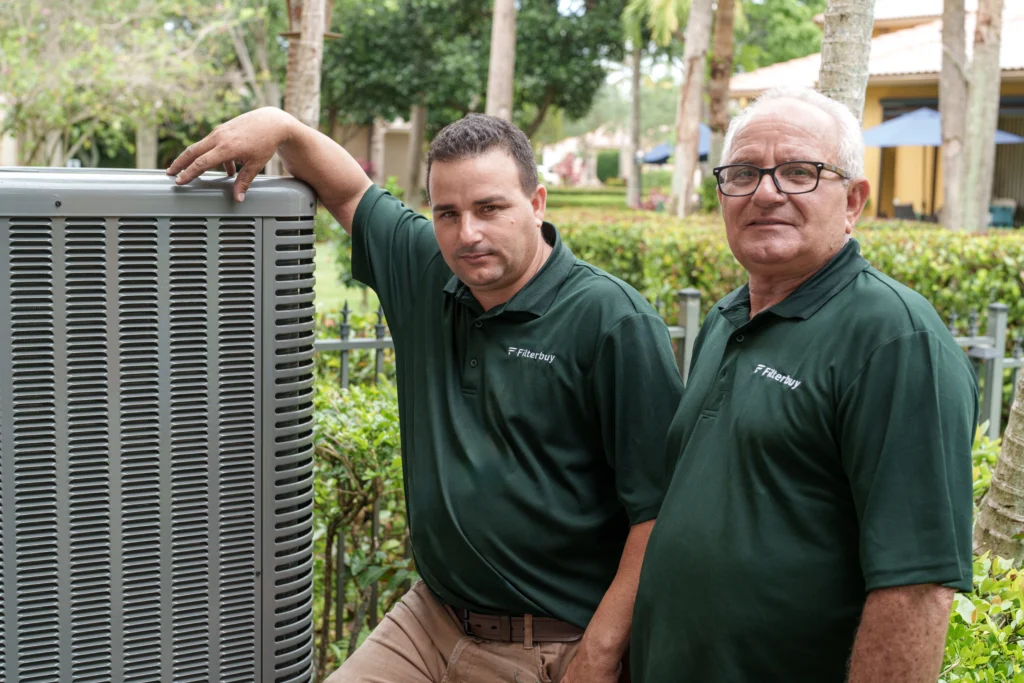Venturing into the realm of a brand-new furnace and AC setup often conjures visions of steep price tags and nervous wallet-clutching. Yet this investment—typically hovering around the $10,000 mark—translates into reliable, year-round comfort: balmy indoor warmth when winter arrives and soothing breezes during scorching summer months.
A variety of elements shape the final cost, from energy-efficient unit choices to the twists and turns of a tricky installation. Even local labor rates can nudge the number higher or lower. With thoughtful planning, the result is a well-balanced system that offers both peace of mind and noticeable savings over time—no sweaty brows or chilly toes required.
Key Takeaways
- Furnace installation expenses often roam in the realm of a few thousand dollars, granting cozy indoor retreats.
- Standard gas furnace setups rarely climb past $3,500, while high-efficiency champions demand a loftier tribute.
- Electric furnaces stand out as thrifty trailblazers, keeping costs modest while providing reliable warmth.
- AC installation fees can swing widely, shaped by factors like equipment size, efficiency ratings, and local labor rates.
- Though energy-conscious models and dedicated maintenance may carry a higher upfront toll, their enduring savings brighten the road ahead.
Embarking on the Furnace and AC Cost Quest
A hush settles on the homeownership realm, where every property strives to balance immediate spending against long-term rewards. High-efficiency units often demand a steeper entrance fee, yet their swift reduction in monthly energy bills can be downright magical. Many modern systems boast impressive Energy Efficiency Ratios (EER), effortlessly translating power into cool relief or cozy warmth. The higher that EER, the kinder the toll on wallets in the grand scheme.
Maintenance weaves the second act of this tale, with routine inspections and timely tune-ups standing guard against costly breakdowns. Everything from a system’s complexity to local climate quirks influences how frequently these watchful visits must occur. By embracing diligent upkeep and thoughtful equipment choices, property owners forge a path to enduring comfort—proof that wise investments reap bountiful rewards.
Unraveling the Cost Puzzle: Furnace and AC Installations
A hidden tapestry of factors awaits anyone embarking on a furnace or AC installation. Each strand—whether system complexity, seasonal labor demands, or equipment type—plays its part in shaping the final price. Even geography stands ready to tip the scales with shifting permit fees and labor rates. Amid this dynamic landscape, partnering with trustworthy suppliers like Filterbuy HVAC solutions can simplify the path to long-lasting comfort and smart spending.
1. Complexity of the Setup
When intricate ductwork or retrofitting enters the picture, labor hours and specialized expertise drive up installation fees.
2. Seasonal Demand
Peak periods of scorching heat or biting cold often push professional rates higher, making off-peak scheduling a wise budget move.
3. Regional Variables
Permit costs and local labor fees differ widely, meaning the same job can carry varied price tags from one ZIP code to the next.
4. Equipment Choice
High-efficiency units may appear more expensive at first but deliver welcome long-term savings through lower utility bills.
Charting the Furnace Frontier: Average Installation Costs
A sturdy furnace brings more than warmth—it can also reshape a household budget. Typical installations land between $2,500 and $6,000, varying by furnace type and efficiency ratings that ultimately guide the final tally.
Standard gas furnaces often claim a mid-range spot at around $3,500, while high-efficiency models can soar up to $5,000. Oil furnaces, less favored but still formidable, may reach $8,000. Electric counterparts, meanwhile, shine as thrifty contenders, generally costing between $1,000 and $2,500.
Energy efficiency, measured by the Annual Fuel Utilization Efficiency (AFUE) rating, holds center stage in determining both costs and savings. Higher AFUE figures mean lower monthly bills, even if they come with a bigger upfront commitment. Alongside a trusted partner like Filterbuy HVAC solutions, a well-considered investment in performance can reward homeowners with lasting comfort and peace of mind.
Venturing into Cool Territory: Typical AC Installation Costs
A freshly installed air conditioner serves as a steadfast ally against sweltering days, yet every setup follows its own pricing path. Whether it’s the grand scale of your home or the complexity beneath the surface, a range of influences shapes each final invoice. Teaming up with a trusted source like Filterbuy HVAC solutions can help ensure these initial outlays pave the way for sustained, breezy comfort.
1. Unit Size and Model
Larger houses demand more powerful systems, and next-level efficiency often carries a higher sticker price. However, premium models can offer a tidy return later by shrinking monthly utility bills.
2. Complexity of Installation
Obstructed crawl spaces, elaborate ductwork, or custom design elements often call for extra labor hours and specialized materials, gently nudging up the overall cost.
3. Professional Labor
Hourly rates among HVAC specialists vary, and surprises in the process—such as outdated wiring—can extend both project timelines and expenses.
4. System Maintenance
Routine checkups, filter changes, and tune-ups add a bit to yearly expenses. Still, these measures stand guard against pricy breakdowns and help the system run like a well-oiled machine for years to come.
Tips for Slashing Installation Costs
Once, a cost-conscious homeowner set out on a journey to tame furnace and AC installation expenses without sacrificing year-round comfort. Their most potent ally proved to be energy efficiency: high-performing models often carry loftier price tags at the start but repay the difference by steadily shaving off monthly bills. Systems with Energy Star certification can cut heating and cooling expenses by up to 20%, revealing a budget-friendly secret hidden in plain sight. Even Filterbuy HVAC solutions can offer added value, combining quality and efficiency in one trusted source.
Additional savings emerged through small but strategic tasks tackled beforehand. Clearing away clutter and making sure technicians can glide in and out minimizes labor hours. While the final hook-up remains a professional’s domain, chipping in on simple prep steps keeps the meter from spinning too fast. In the end, sensible planning turns a seemingly pricey endeavor into a long-term victory for both wallet and home.
Frequently Asked Questions
How much should I expect to pay for a new furnace and air conditioner?
Costs vary by brand, size, and efficiency rating. High-efficiency models may have a higher price tag upfront but often deliver long-term energy savings.
Is it cheaper to replace the AC and furnace together?
In many cases, replacing both can reduce labor and material costs. Weigh initial installation fees against potential savings on future maintenance and energy bills.
How much does it cost to install central AC and heat?
Total expenses differ based on local permit fees, regional labor rates, and installation complexity. High-efficiency systems can increase upfront costs but significantly lower monthly energy bills.
How much does it cost to install an HVAC system with ductwork?
Home size and layout play a significant role in ductwork design, which can drive up installation costs. Though more expensive initially, efficient duct systems reduce long-term energy loss and optimize HVAC performance.
What time of year is the cheapest to replace HVAC?
Spring and fall are typically off-peak seasons, often yielding lower prices and potential discounts. Reduced demand during these periods can translate to savings on labor and equipment.
Why is replacing a furnace so expensive?
High-efficiency furnaces require advanced components and more complex setups, increasing installation costs. However, these units pay for themselves over time through reduced energy bills.
What is considered old for a furnace?
Most furnaces last 15 to 20 years with proper care. Systems regularly breaking down or nearing this age range are often labeled old and may warrant replacement.
How long does it take to install a new furnace and air conditioner?
A typical furnace and AC installation can span several hours to a full day, depending on the home’s layout and any required modifications—removal of old units and proper setup of new equipment factor into the timeline.
Can I replace just the furnace without replacing the AC?
Yes. A stand-alone furnace upgrade can be cost-effective if your AC system still runs efficiently. However, assessing overall HVAC compatibility is key to maximizing energy efficiency.
Does homeowners’ insurance cover HVAC?
Homeowners’ policies usually protect HVAC systems only when damage stems from covered events like fires or storms. Normal wear, tear, and aging generally fall outside of standard coverage.
Will HVAC prices go down in 2024?
Market trends and evolving energy regulations drive HVAC costs. While efficiency improvements could influence prices, it’s wise to monitor industry developments before making decisions.
How often should you replace your furnace and air conditioner?
Furnaces and AC units typically function well for 15 to 25 years, influenced by usage, maintenance, and brand quality. Prompt replacement can enhance home comfort and improve resale value.







